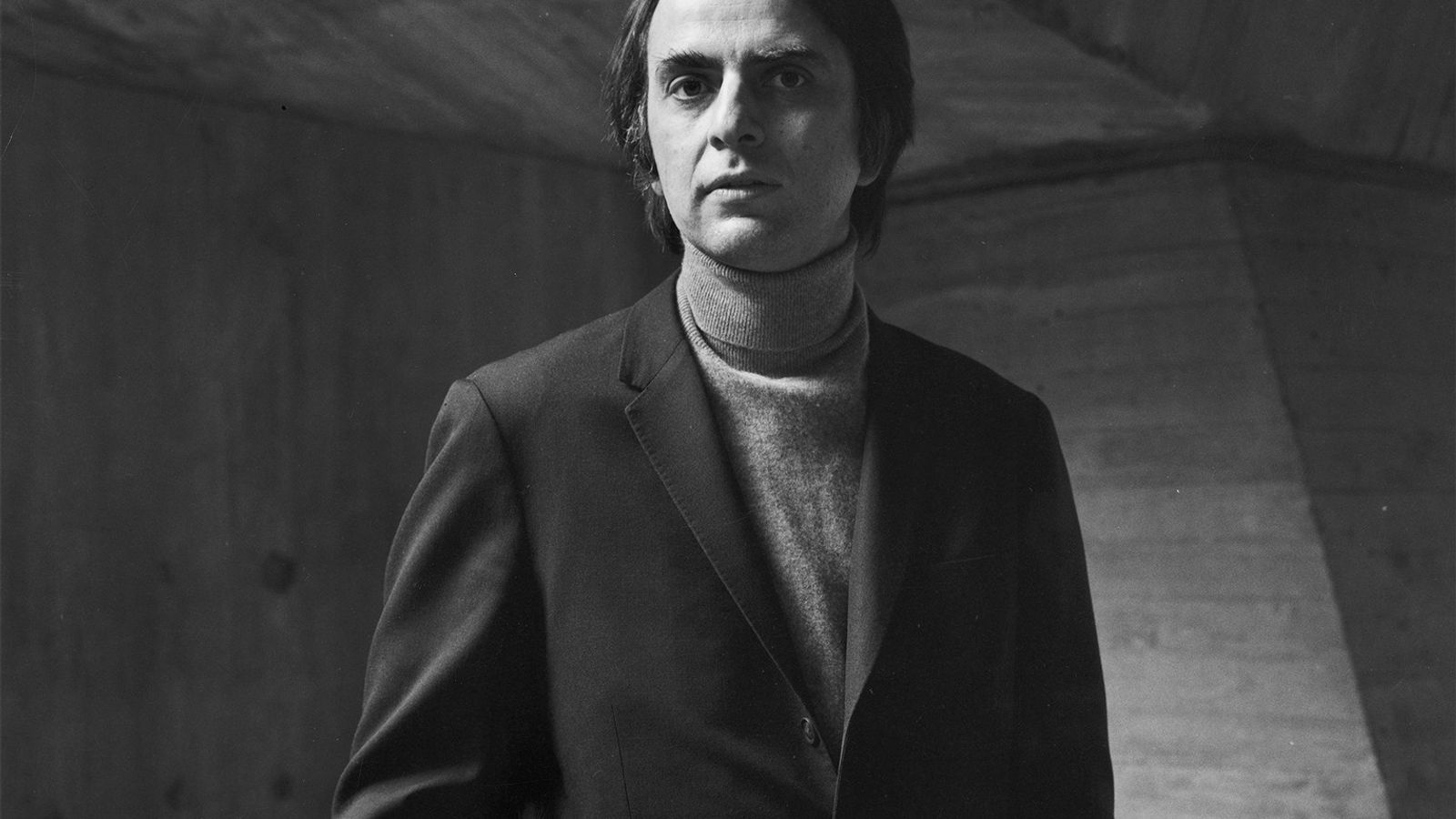Dr. Carl Sagan
The man who dedicated his life to finding extraterrestrial intelligent life

Here's a time line of Dr. Carl Sagan's life:
- 1934 - Born in Brooklyn, New York, U.S
- 1955 - Receives B.S degree in Physics.
- 1960 - Earns a Ph.D with his thesis Physical Studies of Planets submitted to the Department of Astronomy and Astrophysics.
- 1960 - Becomes a Miller Fellow at the University of California, Berkeley. Meanwhile, he publishes an article in 1961 in the journal Science on the atmosphere of Venus, while also working with NASA's Mariner 2 team, and serves as a "Planetary Sciences Consultant" to the RAND Corporation.
- 1963 - Starts to work as assistant Professor in Harvard University. Lectures, performs research and advices graduated students as the institution as well as working at the Smithsonian Astrophysical Observatory also located in Cambridge Massachussetts.
- 1968 - Sagan is denied tenure at Harvard. He later indicated that the decision was very much unexpected. The tenure denial has been blamed on several factors, including that he focused his interests too broadly across a number of areas (while the norm in academia is to become a renowned expert in a narrow specialty), and perhaps because of his well-publicized scientific advocacy, which some scientists perceived as borrowing the ideas of others for little more than self-promotion. An advisor from his years as an undergraduate student, Harold Urey, wrote a letter to the tenure committee recommending strongly against tenure for Sagan.
- 1972 - Works as associate director of the Center of Radiophysics and Space Research (CRSR) at Cornell.
- 1976 - Becomes Duncan Professor of Astronomy and Space Sciences, a position he held for the remainder of his life.
- 1977 - Delivers the series of Royal Institution Christmas lectures in London.
- 1980 - In 1980 Sagan co-writes and narrates the award-winning 13-part PBS television series Cosmos: A Personal Voyage, which became the most widely watched series in the history of American public television. The show has been seen by at least 500 million people across 60 different countries. The book, Cosmos, written by Sagan, was published to accompany the series
- 1982 - Proposes of searching of extraterrestrial life, urging the scientific community to listen with radio telescopes for signals from potential intelligent extraterrestrial life forms.
- 1984 - Co-authors the book The Cold and the Dark: The World after Nuclear War.
- 1985 - Writes the best-selling science fiction novel Contact.
- 1995 - Writes a sequel to Cosmos, Pale blue Dot: A vision of the Human Future in Space.
- 1995 - Advocates for the creation of an organized search for asteroids/near-Earth objects (NEOS) that might impact the Earth.
- 1996 - Dies of the age of 62.
"Sagan invites me into the lab, and he signs one of his books to me. Didn’t even look, he just reached back and grabbed a book on his shelf, and it was one of his books. That was badass, to just reach back and not even look."
-- Neil deGrasse Tyson. Director of the Hayden Planetarium and hosts Nat Geo’s StarTalk.